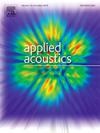Block-wise superposition-based frequency-domain synthetic aperture focusing imaging of leaky Rayleigh waves
IF 3.4
2区 物理与天体物理
Q1 ACOUSTICS
引用次数: 0
Abstract
Leaky Rayleigh waves can be used to detect surface or sub-surface defects. The main advantage of this type of non-contact detection method is that it is easy to realize automatic inspections. However, due to the need for waveform conversion and propagation attenuation, the echo amplitudes of leaky Rayleigh waves are small, making them highly susceptible to noise, which is not conducive to defect detection and large-area imaging. A method that combines principal component analysis (PCA) with wavelet-based hidden Markov model (WHMM) algorithms is presented to denoise leaky Rayleigh waves. Subsequently, multiple sets of denoised B-scan data are then subjected to distance amplitude curve (DAC) attenuation compensation and frequency-domain synthetic aperture focusing technique (F-SAFT) for imaging. Finally, to achieve large-area imaging, F-SAFT processed data are superimposed and stitched together using a block-wise superposition method. Compared with B-scan data stitching imaging, the proposed method has a detection time of only 1/24 of that of B-scanning while reducing the average defect size error by 21.5 %, thus effectively improving the imaging efficiency and resolution for surface defect detection.
求助全文
约1分钟内获得全文
求助全文
来源期刊

Applied Acoustics
物理-声学
CiteScore
7.40
自引率
11.80%
发文量
618
审稿时长
7.5 months
期刊介绍:
Since its launch in 1968, Applied Acoustics has been publishing high quality research papers providing state-of-the-art coverage of research findings for engineers and scientists involved in applications of acoustics in the widest sense.
Applied Acoustics looks not only at recent developments in the understanding of acoustics but also at ways of exploiting that understanding. The Journal aims to encourage the exchange of practical experience through publication and in so doing creates a fund of technological information that can be used for solving related problems. The presentation of information in graphical or tabular form is especially encouraged. If a report of a mathematical development is a necessary part of a paper it is important to ensure that it is there only as an integral part of a practical solution to a problem and is supported by data. Applied Acoustics encourages the exchange of practical experience in the following ways: • Complete Papers • Short Technical Notes • Review Articles; and thereby provides a wealth of technological information that can be used to solve related problems.
Manuscripts that address all fields of applications of acoustics ranging from medicine and NDT to the environment and buildings are welcome.
 求助内容:
求助内容: 应助结果提醒方式:
应助结果提醒方式:


